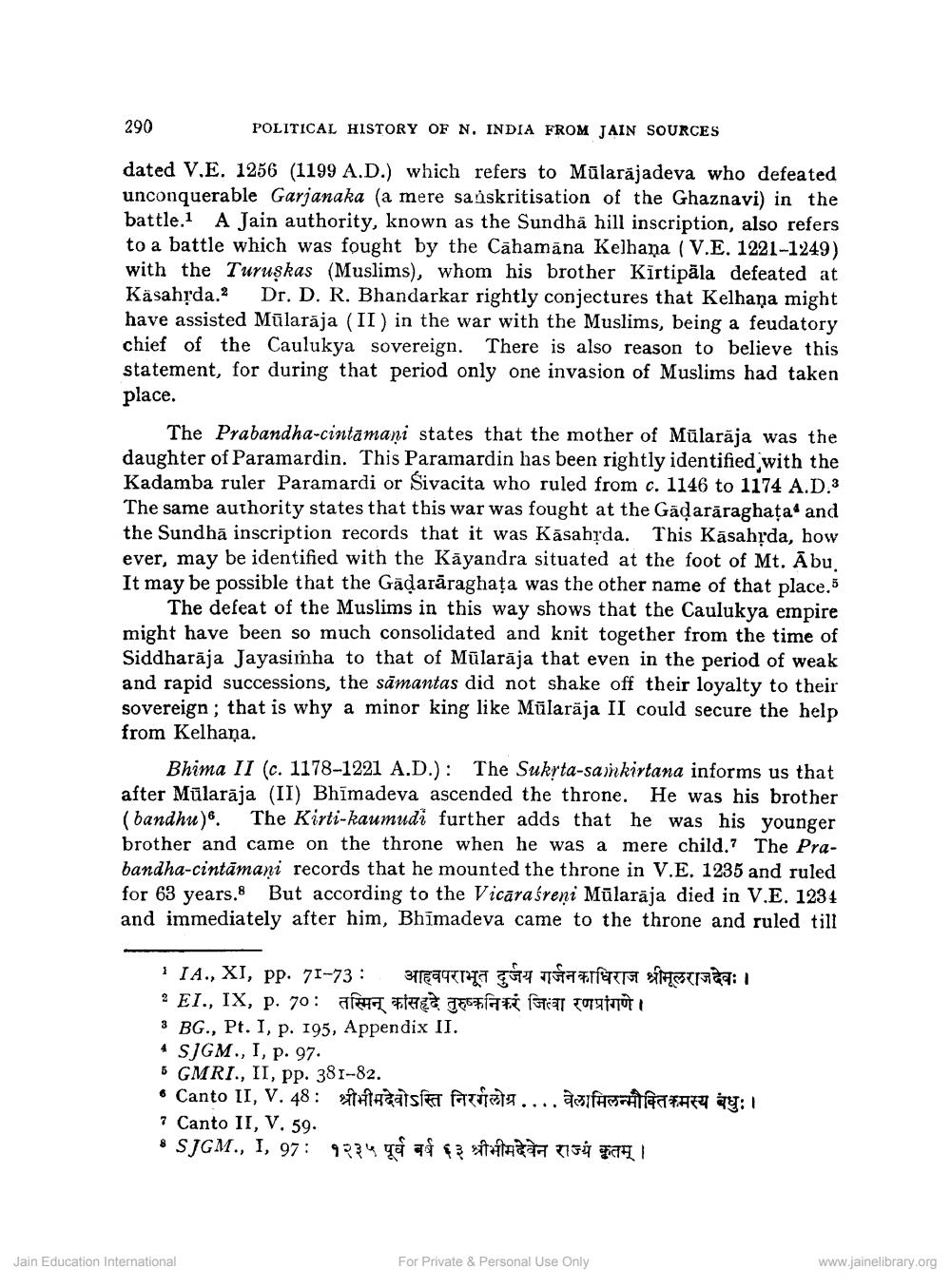________________
290
POLITICAL HISTORY OF N. INDIA FROM JAIN SOURCES
dated V.E. 1256 (1199 A.D.) which refers to Mūlarājadeva who defeated unconquerable Garjanaka (a mere sanskritisation of the Ghaznavi) in the battle.1 A Jain authority, known as the Sundhä hill inscription, also refers to a battle which was fought by the Cähamana Kelhana (V.E. 1221-1249) with the Turuskas (Muslims), whom his brother Kirtipāla defeated at Käsahệda.2 Dr. D. R. Bhandarkar rightly conjectures that Kelhaņa might have assisted Mūlaraja (II) in the war with the Muslims, being a feudatory chief of the Caulukya sovereign. There is also reason to believe this statement, for during that period only one invasion of Muslims had taken place.
The Prabandha-cintamani states that the mother of Mūlarăja was the daughter of Paramardin. This Paramardin has been rightly identified with the Kadamba ruler Paramardi or Sivacita who ruled from c. 1146 to 1174 A.D.3 The same authority states that this war was fought at the Gädarāraghata and the Sundhā inscription records that it was Kāsahrda. This Kasahrda, how ever, may be identified with the Kāyandra situated at the foot of Mt. Ābu. It may be possible that the Gādarāraghata was the other name of that place.5
The defeat of the Muslims in this way shows that the Caulukya empire might have been so much consolidated and knit together from the time of Siddharāja Jayasimha to that of Mūlarāja that even in the period of weak and rapid successions, the sämantas did not shake off their loyalty to their sovereign; that is why a minor king like Mülarāja II could secure the help from Kelhaņa.
Bhima II (c. 1178-1221 A.D.): The Sukrta-samkirtana informs us that after Mülarāja (II) Bhīmadeva ascended the throne. He was his brother (bandhu). The Kirti-kaumudi further adds that he was his younger brother and came on the throne when he was a mere child.? The Prabandha-cintāmani records that he mounted the throne in V.E. 1235 and ruled for 63 years. But according to the Vicāraśreni Mūlarāja died in V.E. 1234 and immediately after him, Bhimadeva came to the throne and ruled till
1 IA., XI, pp. 71-73 : BERTH FUFFIT STR: 1 2 EI., IX, p. 70: afeita 1971 fa TOTETTO 3 BG., Pt. I, p. 195, Appendix II. 4 SJGM., I, p. 97. 6 GMRI., II, pp. 381-82. . Canto II, V. 48: staatsje fatiaa....asifASSHOFARI QY: 1 7 Canto II, V. 59.
SJGM., I, 97: 9734 ad qə satuthada 7756 CTI
Jain Education International
For Private & Personal Use Only
www.jainelibrary.org




